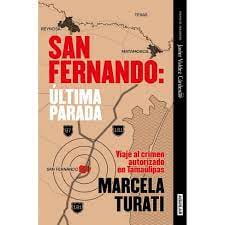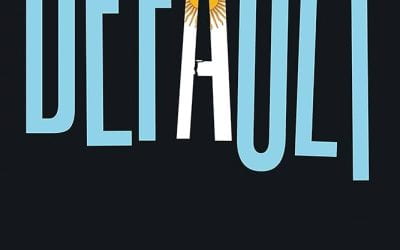A Review of Llamas, Weavings, and Organic Chocolate: Multicultural Grassroots Development in the Andes and Amazon of Bolivia
Development with Identity

Llamas, Weavings, and Organic Chocolate: Multicultural Grassroots Development in the Andes and Amazon of Bolivia By Kevin Healy University of Notre Dame Press, Notre Dame, Indiana, 2001, 485 pages.
I first met Kevin “Benito” Healy a little over four years ago at an information session he gave to a group of State Department Foreign Service officers on their way to assignments in the Andes. After the session, I asked Healy for more information about Bolivia’s indigenous peoples in preparation for my assignment in La Paz. As we talked, he suggested I meet with an Aymara student from the Bolivian Altiplano studying at Georgetown through a scholarship provided by his organization, the Inter- American Foundation (IAF). My initial contact with this student, who with a shaven head and chiseled features resembles at first glance a Tibetan monk, was for coffee. Over the course of my assignment, this proved to be the first of many conversations we shared. It was also the catalyst for my interaction with a variety of indigenous groups and people interested in their welfare in the country. At the time of our first meeting, however, I had little sense of how rare it was to meet an English-speaking indigenous student from the Altiplano of Bolivia attending an Ivy League school in the U.S.
Today, I cannot think of a better introduction to the social, economic and political realities of the country and the related challenges its indigenous peoples face in their daily lives. If you read with an open mind, you will find all the elements of my first introduction to Bolivia in the opening chapters of Healy’s book—and more. Healy, the IAF’s Bolivian project officer for over twenty years, brings to this book a personal, hands-on understanding of the country. In particular, he notes in the nine development project case studies he reviews that discrimination is—and remains—an institutional and social obstacle to improving the lives of the country’s poorest people. This observation essentially captures what makes economic development in Bolivia different, with the possible exception of Guatemala, from whatever could be considered the norm in the Hemisphere. With few exceptions, the poorest people in Bolivia are indigenous. They are also the majority of the population, constitute a number of distinct indigenous identities, and live in a geographically diverse terrain that includes some of the highest mountains in the world (the Andes) and a portion of the tropical headwaters of one of its longest rivers (the Amazon).
Healy sketches out for us in his selection of case studies that the cultural identity and heritage of this “multicultural” indigenous population, once considered an impediment to development, is quite the opposite—it is a strength. This may sound obvious, but the evidence of more than fifty years of relative failures at the local level by international donors says otherwise. Granted, Healy measures success as the ability to improve the quality of life of people living below, on or slightly above the poverty line. He is not talking about multi-million dollar infrastructure projects. But, from what I have seen during my years in Bolivia, there is scant evidence large-scale projects have contributed much towards helping the poorest people if the measure is a significant or sustained contribution to the eradication of their poverty. From this perspective, I believe Healy is accurate in what he is saying to us in this book: that cultural revitalization is an element common in the grassroots development projects supported by the IAF that were successful in improving the quality of local people’s lives.
I am most familiar with the type of success Healy describes in his case study about textiles and the Jalq’a weavers of Chuquisaca. These weavers and their textiles were featured in 1992 at the Washington, D.C. Smithsonian Folklife Festival and in an exhibit at the same time at the Sackler Museum. On a wall in my apartment hangs one of their signature black and red weavings with its distinctive khurus (primal creatures with origins in the dreams of ancestors and cave drawings) that I purchased at the Antropologos del Sur Andino (ASUR) museum in Sucre, Bolivia. This textile came with the name and a picture of the woman who wove it. After the sale, most of my purchase price was returned to her by the museum. Her textile is the direct result of her community’s efforts to recover the almost lost techniques of their weaving heritage. Arguably, the community’s recovery effort and relative commercial success may not have been possible without their interaction with Veronica Cereceda, a Chilean anthropologist and the director of ASUR. Cereceda initially brought the community together and served as a continuing catalyst for them to rediscover their weaving techniques and symbols.
Her museum also markets their work and features the weavers as a living exhibit. However, as Healy relates in this case study, the recovery work and production was ultimately their initiative, on their terms, and at their own pace. These are common elements in the projects presented by Healy. Together they play an important role in the ultimate success or failure and sustainability of any of the development efforts he describes.
The acceptance that the cultural resources and perspectives of indigenous peoples are as essential to a project’s success or failure as the more traditional contributions of others—such as that of Cereceda and Healy through the IAF grants he administered—is what makes this book different. In the book’s nine case studies, ranging from chocolate and quinoa, to llamas and the textiles mentioned above, we are reading about economic change through social interaction on equal terms. This sort of development in Bolivia, as Healy touches upon, is contributing to broader changes in society that began in 1953 with an uprising that gave indigenous peoples the right to vote for the first time in the country’s history. Through accepting and building on indigenous identity, development through cultural revitalization is perhaps proving to be a 21st century pathway to an elusive social inclusion and acceptance that has been missing since the conquest of the New World. As we are seeing played out today in the country’s tumultuous contemporary political scene, this social change is also occurring at their initiative, on their terms and at their pace.
Fall 2004/Winter 2005, Volume III, Number 1
Raymond Tripp, Jr. is a career Foreign Service Officer with the U.S. Department of State. He is currently a member of the U.S. Permanent Delegation to the United Nations Education, Science and Cultural Organization (UNESCO) in Paris, France. His previous assignments have been in Bolivia, Poland, Turkey and India. Any opinions expressed by him in this review are his own and do not necessarily represent the policy or viewpoint of the U.S. government or the Department of State.
Related Articles
A Review of San Fernando: Última Parada, Viaje al crimen autorizado en Tamaulipas
One of Mexico’s best investigative journalists, Marcela Turati, takes readers to terrorized and traumatized San Fernando, a town known for dozens of mass graves, and exposes the depths of criminal brutality and official corruption that hid the bodies and the truth for years.
A Review of Until I Find You: Disappeared Children and Coercive Adoptions in Guatemala
A student in my “Introduction to Cultural Anthropology” course at the University of Delaware approached me several weeks ago, after hearing about my long-term research in Guatemalan communities, to tell me that they were born there, in Guatemala.
A Review of Default: The Landmark Court Battle over Argentina’s $100 Billion Debt Restructuring
In February 2019, I found myself serving as the special attorney general for the then newly recognized interim government of Venezuela, tasked with addressing more than 50 claims before the U.S. courts stemming from the $140 billion debt inherited from Hugo Chávez and Nicolás Maduro.




